Flowers hold a timeless charm, with each bloom telling a unique story through its colors, shapes, and fragrances. The vast array of floral diversity includes countless varieties, each starting with different letters of the alphabet. This guide focuses on flowers that begin with the letter ‘J,’ uncovering 100 beautiful blooms. From the delicate Jasmine to the vibrant Jacaranda, these flowers not only enhance gardens and landscapes but also carry cultural, medicinal, and symbolic significance.
Jack-in-the-Pulpit (Arisaema triphyllum)

- Native Habitat: Eastern North America
- Appearance: A distinctive flower with a hooded structure called a spathe surrounding a spadix.
- Bloom Time: Spring to early summer.
- Interesting Fact: The plant contains calcium oxalate crystals, making it toxic if ingested raw.
Jacob’s Ladder (Polemonium caeruleum)
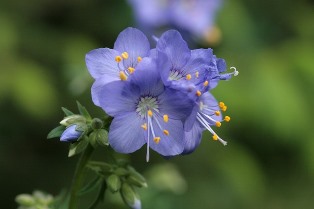
- Native Habitat: Northern Hemisphere, primarily Europe.
- Appearance: Compound leaves with leaflets resembling a ladder; flowers are blue or violet.
- Bloom Time: Late spring to early summer.
- Interesting Fact: Named for its ladder-like leaf structure, reminiscent of the biblical story of Jacob’s ladder.
Japanese Anemone (Anemone hupehensis)

- Native Habitat: China, naturalized in Japan.
- Appearance: Tall, graceful plants with single or double flowers in shades of white, pink, or purple.
- Bloom Time: Late summer to fall.
- Interesting Fact: Known for its long bloom period and ability to thrive in partial shade.
Japanese Camellia (Camellia japonica)
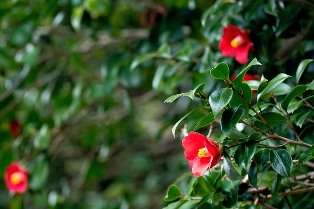
- Native Habitat: Japan, Korea, and China.
- Appearance: Evergreen shrubs or small trees with large, glossy leaves and flowers in red, pink, or white.
- Bloom Time: Late winter to spring.
- Interesting Fact: Symbol of purity and longevity in Japanese culture.
Japanese Iris (Iris ensata)

- Native Habitat: Japan.
- Appearance: Large, flat flowers in a variety of colors including blue, purple, white, and pink.
- Bloom Time: Early to mid-summer.
- Interesting Fact: Often grown in water gardens or alongside ponds due to its preference for moist soil.
Japanese Knotweed (Fallopia japonica)

- Native Habitat: Japan, China, and Korea.
- Appearance: Tall, bamboo-like stems with heart-shaped leaves and small white flowers.
- Bloom Time: Late summer to early autumn.
- Interesting Fact: Considered an invasive species in many parts of the world due to its aggressive growth and difficulty to eradicate.
Japanese Maple (Acer palmatum)

- Native Habitat: Japan, China, Korea.
- Appearance: Small deciduous trees with finely divided leaves that turn vibrant colors in autumn.
- Bloom Time: Spring.
- Interesting Fact: Popular ornamental tree known for its striking fall foliage and graceful form.
Japanese Morning Glory (Ipomoea nil)
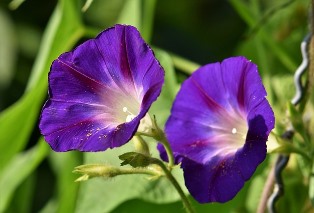
- Native Habitat: Japan.
- Appearance: Twining vines with heart-shaped leaves and large, funnel-shaped flowers in various colors.
- Bloom Time: Summer to early autumn.
- Interesting Fact: Cultivated since the Edo period in Japan, often used in traditional gardens.
Japanese Pagoda Tree (Styphnolobium japonicum)

- Native Habitat: China, widely cultivated in Japan.
- Appearance: Deciduous tree with pinnate leaves and clusters of white flowers.
- Bloom Time: Late summer.
- Interesting Fact: Also known as the Scholar Tree, it is often planted in temples and gardens.
Japanese Toad Lily (Tricyrtis hirta)

- Native Habitat: Japan.
- Appearance: Perennial plants with arching stems and star-shaped flowers speckled with purple spots.
- Bloom Time: Late summer to fall.
- Interesting Fact: Prefers shady, woodland garden settings and moist soil.
Jasmine (Jasminum spp.)
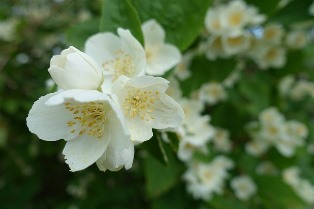
- Native Habitat: Tropical and subtropical regions of Eurasia, Australasia, and Oceania.
- Appearance: Shrubs and vines with fragrant, usually white or yellow flowers.
- Bloom Time: Varies by species.
- Interesting Fact: Widely cultivated for its aromatic flowers used in perfumes and teas.
Jatropha (Jatropha spp.)

- Native Habitat: Tropics and subtropics.
- Appearance: Shrubs or small trees with lobed leaves and clusters of small flowers.
- Bloom Time: Varies by species.
- Interesting Fact: Some species produce seeds that can be used for biofuel.
Jerusalem Artichoke (Helianthus tuberosus)
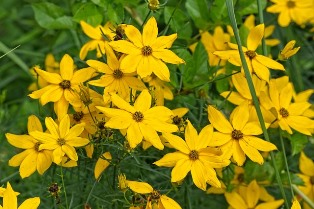
- Native Habitat: Central North America.
- Appearance: Tall plants with sunflower-like blooms and edible tubers.
- Bloom Time: Late summer to fall.
- Interesting Fact: Tubers are used as a root vegetable and known for their nutty flavor.
Jerusalem Cherry (Solanum pseudocapsicum)

- Native Habitat: Peru and Ecuador.
- Appearance: Small shrubs with glossy leaves and bright red or orange berries.
- Bloom Time: Late summer to fall.
- Interesting Fact: Often grown as an ornamental plant, but the berries are toxic if ingested.
Jerusalem Sage (Phlomis fruticosa)

- Native Habitat: Mediterranean region.
- Appearance: Shrubs with woolly leaves and yellow flowers.
- Bloom Time: Late spring to early summer.
- Interesting Fact: Known for its drought tolerance and used in xeriscaping.
Jewelweed (Impatiens capensis)

- Native Habitat: North America.
- Appearance: Annual plants with succulent stems and orange or yellow flowers.
- Bloom Time: Summer to fall.
- Interesting Fact: Known for its ability to relieve skin irritation from poison ivy.
Joe Pye Weed (Eutrochium purpureum)

- Native Habitat: Eastern and Central North America.
- Appearance: Tall, herbaceous perennials with clusters of pink or purple flowers.
- Bloom Time: Late summer to early fall.
- Interesting Fact: Named after a Native American herbalist who used it for medicinal purposes.
Johnson’s Blue Geranium (Geranium ‘Johnson’s Blue’)

- Native Habitat: Cultivar.
- Appearance: Mounding perennial with deeply cut leaves and sky-blue flowers.
- Bloom Time: Late spring to early summer.
- Interesting Fact: Popular in gardens for its long blooming period and attractive foliage.
Jonquil (Narcissus jonquilla)
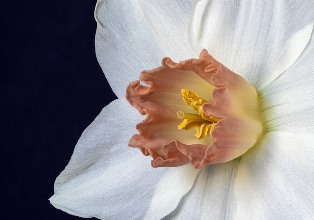
- Native Habitat: Spain and Portugal.
- Appearance: Perennial bulbs with narrow leaves and clusters of fragrant yellow flowers.
- Bloom Time: Spring.
- Interesting Fact: Often associated with renewal and springtime in various cultures.
Joshua Tree (Yucca brevifolia)

- Native Habitat: Southwestern United States.
- Appearance: Tree-like yucca with spiky leaves and clusters of greenish-white flowers.
- Bloom Time: Spring.
- Interesting Fact: Iconic plant of the Mojave Desert and protected within Joshua Tree National Park.
Juda’s Tree (Cercis siliquastrum)

- Native Habitat: Southern Europe and Western Asia.
- Appearance: Deciduous tree with heart-shaped leaves and clusters of pink flowers.
- Bloom Time: Spring.
- Interesting Fact: Legend has it that Judas Iscariot hanged himself on this tree.
Justicia (Justicia spp.)

- Native Habitat: Tropics and subtropics.
- Appearance: Shrubs with opposite leaves and colorful, tubular flowers.
- Bloom Time: Varies by species.
- Interesting Fact: Popular in tropical gardens for their bright blooms and ease of care.
Jumping Cholla Cactus (Cylindropuntia fulgida)
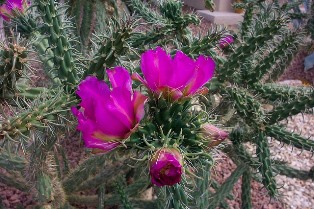
- Native Habitat: Southwestern United States and Mexico.
- Appearance: Cactus with cylindrical joints that easily detach and adhere to passersby.
- Bloom Time: Spring to early summer.
- Interesting Fact: Known for its defensive mechanism of easily attaching to animals and humans.
Juneberry (Amelanchier spp.)

- Native Habitat: North America.
- Appearance: Deciduous shrubs or small trees with white flowers and edible berries.
- Bloom Time: Spring.
- Interesting Fact: Berries are sweet and often used in jams, pies, and desserts.
Japanese Aralia (Fatsia japonica)

- Native Habitat: Southern Japan, South Korea, Taiwan.
- Appearance: Evergreen shrub with large, glossy, palmate leaves and white flower clusters.
- Bloom Time: Late fall to early winter.
- Interesting Fact: Often used as a houseplant or in shaded garden areas.
Japanese Bellflower (Campanula japonica)

- Native Habitat: Japan.
- Appearance: Herbaceous perennial with bell-shaped, blue or violet flowers.
- Bloom Time: Summer.
- Interesting Fact: Valued for its long blooming period and delicate flowers.
Japanese Blood Grass (Imperata cylindrica ‘Red Baron’)

- Native Habitat: Southeast Asia.
- Appearance: Ornamental grass with red-tipped leaves.
- Bloom Time: Summer.
- Interesting Fact: Adds striking color contrast to garden landscapes.
Japanese Climbing Fern (Lygodium japonicum)

- Native Habitat: Eastern Asia.
- Appearance: Climbing fern with delicate, lacy fronds.
- Bloom Time: Non-flowering fern.
- Interesting Fact: Considered invasive in some regions due to its rapid spread.
Japanese Fern Tree (Filicium decipiens)

- Native Habitat: India and Sri Lanka.
- Appearance: Small evergreen tree with fern-like foliage and small white flowers.
- Bloom Time: Summer.
- Interesting Fact: Popular as an ornamental tree in tropical and subtropical regions.
Japanese Honeysuckle (Lonicera japonica)
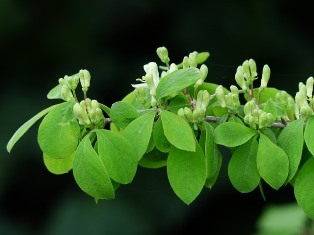
- Native Habitat: Eastern Asia.
- Appearance: Twining vine with fragrant white or yellow flowers.
- Bloom Time: Spring to summer.
- Interesting Fact: Considered invasive in many areas due to its aggressive growth.
Japanese Kerria (Kerria japonica)

- Native Habitat: China, Japan, Korea.
- Appearance: Deciduous shrub with bright yellow, pom-pom-like flowers.
- Bloom Time: Spring.
- Interesting Fact: Often used in gardens for its cheerful blooms and easy care.
Japanese Laurel (Aucuba japonica)

- Native Habitat: Japan, China, Korea.
- Appearance: Evergreen shrub with glossy, speckled leaves and red berries.
- Bloom Time: Spring.
- Interesting Fact: Tolerates shade well, making it ideal for dark garden corners.
Japanese Magnolia (Magnolia kobus)

- Native Habitat: Japan.
- Appearance: Deciduous tree with large, fragrant white or pink flowers.
- Bloom Time: Early spring.
- Interesting Fact: Often one of the first trees to bloom in spring, signaling the season’s arrival.
Japanese Primrose (Primula japonica)

- Native Habitat: Japan.
- Appearance: Perennial with whorls of pink, red, or white flowers on tall stems.
- Bloom Time: Late spring to early summer.
- Interesting Fact: Prefers moist, shady conditions, often found near streams or ponds.
Japanese Quince (Chaenomeles japonica)

- Native Habitat: Japan.
- Appearance: Deciduous shrub with thorny branches and bright red, pink, or white flowers.
- Bloom Time: Early spring.
- Interesting Fact: Produces small, fragrant fruits that can be used in jellies and preserves.
Japanese Snowbell (Styrax japonicus)

- Native Habitat: Japan, China, Korea.
- Appearance: Small deciduous tree with pendulous white flowers.
- Bloom Time: Late spring to early summer.
- Interesting Fact: Known for its graceful form and attractive flowers.
Japanese Spurge (Pachysandra terminalis)
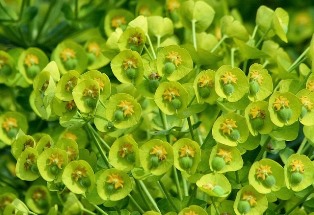
- Native Habitat: Japan, China.
- Appearance: Evergreen ground cover with glossy leaves and small white flowers.
- Bloom Time: Spring.
- Interesting Fact: Commonly used in shady areas as a low-maintenance ground cover.
Japanese Stewartia (Stewartia pseudocamellia)

- Native Habitat: Japan.
- Appearance: Deciduous tree with camellia-like white flowers and exfoliating bark.
- Bloom Time: Summer.
- Interesting Fact: Valued for its multi-season interest, including showy flowers and attractive bark.
Japanese Yew (Taxus cuspidata)

- Native Habitat: Japan, Korea, China.
- Appearance: Evergreen shrub or small tree with dark green needles and red berries.
- Bloom Time: Spring.
- Interesting Fact: Often used in hedges and topiary due to its dense growth habit.
Japanese Zelkova (Zelkova serrata)

- Native Habitat: Japan, China, Korea.
- Appearance: Deciduous tree with elm-like leaves and attractive fall color.
- Bloom Time: Spring.
- Interesting Fact: Resistant to Dutch elm disease, making it a popular replacement for elms.
Juno Iris (Iris bucharica)

- Native Habitat: Central Asia.
- Appearance: Bulbous perennial with yellow and white flowers.
- Bloom Time: Early spring.
- Interesting Fact: Known for its distinctive, broad leaves and early bloom.
Jaborosa (Jaborosa spp.)

- Native Habitat: South America.
- Appearance: Herbaceous plants with tubular flowers, often white or pale green.
- Bloom Time: Varies by species.
- Interesting Fact: Some species have medicinal properties used in traditional medicine.
Jacaranda (Jacaranda mimosifolia)

- Native Habitat: South America.
- Appearance: Deciduous tree with fern-like leaves and clusters of lavender-blue flowers.
- Bloom Time: Spring to early summer.
- Interesting Fact: Known for its stunning floral display and widely planted as an ornamental tree.
Jacobaea Maritima (Senecio cineraria)

- Native Habitat: Mediterranean region.
- Appearance: Silvery, lobed leaves with small yellow flowers.
- Bloom Time: Summer.
- Interesting Fact: Often used in gardens for its attractive foliage and drought tolerance.
Jacobean Lily (Sprekelia formosissima)
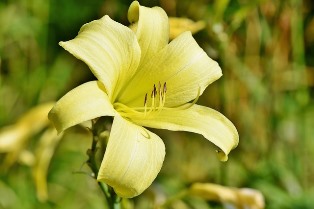
- Native Habitat: Mexico and Guatemala.
- Appearance: Bulbous plant with striking red, lily-like flowers.
- Bloom Time: Late spring to early summer.
- Interesting Fact: Known for its vibrant, exotic flowers and often grown as a houseplant.
Jacquemontia (Jacquemontia spp.)

- Native Habitat: Tropical and subtropical regions.
- Appearance: Vines or trailing plants with blue or white, morning glory-like flowers.
- Bloom Time: Varies by species.
- Interesting Fact: Often used in hanging baskets or as ground cover in warm climates.
Jaegeria (Jaegeria spp.)

- Native Habitat: Tropical Americas.
- Appearance: Herbaceous plants with small, daisy-like flowers.
- Bloom Time: Varies by species.
- Interesting Fact: Some species are used in traditional medicine for their anti-inflammatory properties.
Jasione (Jasione laevis)

- Native Habitat: Europe.
- Appearance: Perennial with tufted, grass-like foliage and blue, spherical flower heads.
- Bloom Time: Summer.
- Interesting Fact: Known for its compact growth habit and suitability for rock gardens.
Jasminum Nudiflorum (Winter Jasmine)

- Native Habitat: China.
- Appearance: Deciduous shrub with bright yellow flowers on bare stems in winter.
- Bloom Time: Winter to early spring.
- Interesting Fact: One of the earliest flowering shrubs, bringing color to winter gardens.
Jasminum Officinale (Common Jasmine)

- Native Habitat: Iran, India.
- Appearance: Climbing vine with fragrant white or pale yellow flowers.
- Bloom Time: Summer.
- Interesting Fact: Widely cultivated for its sweetly scented flowers used in perfumes and teas.
Jasminum Sambac (Arabian Jasmine)

- Native Habitat: Southeast Asia.
- Appearance: Evergreen shrub or vine with intensely fragrant white flowers.
- Bloom Time: Year-round in tropical climates.
- Interesting Fact: National flower of the Philippines and Indonesia, often used in leis and religious offerings.
Jepsonia (Jepsonia parryi)

- Native Habitat: California and Baja California.
- Appearance: Small, perennial herb with kidney-shaped leaves and tiny, pinkish flowers.
- Bloom Time: Fall.
- Interesting Fact: Grows in rocky, shaded habitats and is relatively rare.
Jewelflower (Streptanthus spp.)

- Native Habitat: North America.
- Appearance: Herbaceous plants with unique, often iridescent flowers.
- Bloom Time: Varies by species.
- Interesting Fact: Named for their jewel-like flowers, which can exhibit a metallic sheen.
Johnnie Jump Up (Viola tricolor)

- Native Habitat: Europe and Asia.
- Appearance: Low-growing annual or perennial with tri-colored flowers in purple, yellow, and white.
- Bloom Time: Spring to fall.
- Interesting Fact: Also known as wild pansy, often used in cottage gardens and as a ground cover.
Jolene’s Red Dahlia (Dahlia ‘Jolene’s Red’)

- Native Habitat: Cultivar.
- Appearance: Large, double flowers in a deep red color.
- Bloom Time: Summer to fall.
- Interesting Fact: Known for its striking color and long bloom period, popular in floral arrangements.
Jubaea (Jubaea chilensis)

- Native Habitat: Chile.
- Appearance: Large, slow-growing palm with a stout trunk and feathery fronds.
- Bloom Time: Summer.
- Interesting Fact: Produces edible fruits and sap, which can be used to make a type of syrup.
Juglans (Walnut)

- Native Habitat: Temperate regions of the Northern Hemisphere.
- Appearance: Large trees with pinnate leaves and edible nuts enclosed in a hard shell.
- Bloom Time: Spring.
- Interesting Fact: Valued for their nuts and timber, with the wood being highly prized for furniture.
Juniper (Juniperus spp.)

- Native Habitat: Northern Hemisphere.
- Appearance: Evergreen shrubs or trees with needle-like or scale-like leaves and berry-like cones.
- Bloom Time: Spring.
- Interesting Fact: Berries are used to flavor gin and have various culinary and medicinal uses.
Jatropha Curcas (Physic Nut)

- Native Habitat: Central America.
- Appearance: Shrubs or small trees with lobed leaves and small greenish-yellow flowers.
- Bloom Time: Year-round in tropical climates.
- Interesting Fact: Seeds are toxic but can be processed to produce biodiesel.
Jatropha Integerrima (Spicy Jatropha)

- Native Habitat: West Indies.
- Appearance: Shrubs with glossy leaves and clusters of bright red flowers.
- Bloom Time: Year-round in warm climates.
- Interesting Fact: Attractive to butterflies, often used in tropical gardens.
Justicia Carnea (Brazilian Plume Flower)

- Native Habitat: Brazil.
- Appearance: Shrubs with large, dark green leaves and showy pink or red flower spikes.
- Bloom Time: Summer to fall.
- Interesting Fact: Popular in tropical and subtropical gardens for its vibrant flowers.
Justicia Brandegeana (Shrimp Plant)
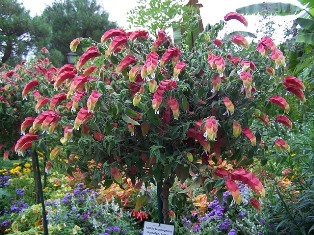
- Native Habitat: Mexico.
- Appearance: Evergreen shrub with arching spikes of red or pink bracts that resemble shrimp.
- Bloom Time: Year-round in warm climates.
- Interesting Fact: Named for its shrimp-like appearance, often grown as a houseplant.
Justicia Betonica (White Shrimp Plant)

- Native Habitat: Tropical Africa and Asia.
- Appearance: Shrubs with green and white variegated leaves and white flower spikes.
- Bloom Time: Year-round in tropical climates.
- Interesting Fact: Known for its attractive foliage and long bloom period.
Justicia Crenata (Brazilian Plume)

- Native Habitat: Brazil.
- Appearance: Shrubs with large leaves and pink or red flower clusters.
- Bloom Time: Year-round in warm climates.
- Interesting Fact: Popular for its showy flowers and ease of cultivation in tropical gardens.
Justicia Gendarussa (Willow-Leaved Justicia)

- Native Habitat: Southeast Asia.
- Appearance: Shrubs with narrow, lance-shaped leaves and small, white or purple flowers.
- Bloom Time: Year-round in tropical climates.
- Interesting Fact: Leaves are used in traditional medicine for various ailments.
Justicia Aurea (Yellow Jacobinia)

- Native Habitat: Mexico and Central America.
- Appearance: Shrubs with large, dark green leaves and bright yellow flower spikes.
- Bloom Time: Summer to fall.
- Interesting Fact: Attractive to hummingbirds and often used in tropical gardens.
Justicia Hyssopifolia (Dwarf Justicia)

- Native Habitat: Mexico and Central America.
- Appearance: Compact shrubs with small, dark green leaves and purple or pink flowers.
- Bloom Time: Year-round in warm climates.
- Interesting Fact: Ideal for small gardens and container planting due to its compact size.
Justicia Procumbens (Water Willow)

- Native Habitat: Asia.
- Appearance: Herbaceous plant with narrow leaves and small purple flowers.
- Bloom Time: Summer to fall.
- Interesting Fact: Grows well in wet, marshy areas and often used in water gardens.
Justicia Pectoralis (Tilo)

- Native Habitat: Central and South America.
- Appearance: Herbaceous plant with lance-shaped leaves and small, pink or white flowers.
- Bloom Time: Year-round in tropical climates.
- Interesting Fact: Used in traditional medicine for its sedative and anti-inflammatory properties.
Jussiara (Euterpe edulis)

- Native Habitat: Brazil.
- Appearance: Palm tree with slender trunk and pinnate leaves.
- Bloom Time: Year-round in tropical climates.
- Interesting Fact: Produces edible fruits known as juçara or acai, which are highly nutritious.
Jubaeopsis (Jubaeopsis caffra)

- Native Habitat: South Africa.
- Appearance: Rare palm tree with feather-like fronds and small, white flowers.
- Bloom Time: Summer.
- Interesting Fact: Endangered species, with efforts being made to conserve its natural habitat.
Jacobinia (Justicia carnea)

- Native Habitat: Brazil.
- Appearance: Shrubs with large, dark green leaves and showy, pink or red flower spikes.
- Bloom Time: Summer to fall.
- Interesting Fact: Attractive to butterflies and often used in tropical gardens for its vibrant blooms.
Jubaea Chilensis (Chilean Wine Palm)

- Native Habitat: Chile.
- Appearance: Large palm tree with a thick trunk and long, feathery fronds.
- Bloom Time: Summer.
- Interesting Fact: Sap can be used to make palm wine, and the seeds are edible.
Jaltomata Procumbens (Creeping False Holly)

- Native Habitat: Mexico and Central America.
- Appearance: Trailing or creeping herb with small, white flowers and green fruits.
- Bloom Time: Summer to fall.
- Interesting Fact: Fruits are edible and often used in traditional medicine.

